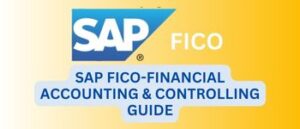Complete analysis of Tally vs SAP
Introduction:
Tally and SAP are two prominent software solutions catering to business accounting and management needs. Tally primarily serves as accounting software, while SAP functions as a comprehensive Enterprise Resource Planning (ERP) solution. In this detailed analysis, we will compare these two software platforms across various dimensions, including their features, architecture, applications, costs, learning curves, job opportunities, and career growth prospects.
Key Differences Between Tally and SAP:
Purpose:
Type:
- Tally: A standalone accounting software.
- SAP: A full-fledged ERP system.
Modules:
Tally‘s core module is Basic Accounting, whereas SAP‘s focal module is FICO (Financial Accounting and Control).
Origin and History:
- Tally is a product of India, originating in Bangalore and launched in 1986.
- SAP is a German-based solution, with a history dating back to 1972.
Ideal Users:
- Tally is ideal for small businesses and startups.
- SAP is best suited for large Multinational Corporations (MNCs).
Focus Areas:
Integration:
- Tally typically integrates with accounting, inventory, and tax modules.
- SAP offers integration across a wide range of modules, including billing, budgeting, Customer Relationship Management (CRM), HR, and more.
Want to Learn SAP?
Tally vs SAP - Cost, Implementation, and Ease of Use:

Cost:
- Tally is cost-effective, making it accessible for smaller businesses.
- SAP involves a significant initial investment, which can be a barrier for smaller enterprises.
Implementation:
User-friendliness:
- Tally is known for its user-friendly interface and is easier to learn.
- SAP may require formal training due to its complexity.
Customization:
- Tally offers limited customization options.
- SAP is highly flexible, allowing extensive customization to suit specific business needs.
Accessibility:
Technical Architecture and Data Management:

Data Handling:
Security:
Architecture:
Tally typically operates on a two-tier architecture, while SAP employs a more intricate three-tier architecture that may involve coding.
Data Storage:
- Tally primarily offers offline data storage, which can entail some risks.
- SAP often enables real-time cloud access, reducing the risk of data loss.
Want to Learn SAP?
Learning, Jobs, and Career Growth:

Learning Curve:
Course Duration:
Jobs:
- Tally proficiency is valued in accounting roles.
- SAP expertise opens doors to high-paying jobs within MNCs and large enterprises.
Growth:
Conclusion:
In conclusion, Tally serves as a straightforward and cost-effective accounting solution well-suited to small businesses, while SAP is a versatile, powerful, and complex ERP system designed for the intricate needs of large enterprises. When choosing between the two, consider your business requirements, budget, available resources, and long-term growth plans to make an informed decision.
Want to Learn SAP?
Want to learn more about SAP? Click here



